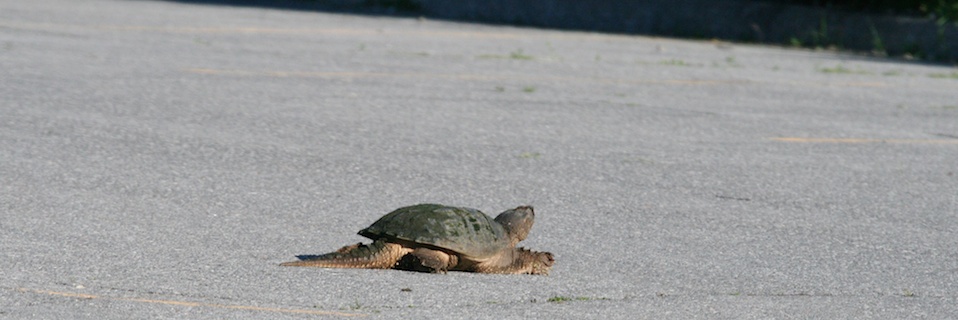What is connectivity
Connectivity is a fundamental principle in nature conservation. Protecting and restoring connectivity is critical in landscapes that have been fragmented by roads and cities. We conserve connectivity for animals by protecting corridors that allow them to move between different habitats, and plants to disperse to meet their needs. Wildlife corridors that connect territories together play a leading role in connectivity, which in turn is essential for wildlife to remain healthy. Species are thus able to migrate from one habitat to another. Connectivity is maintained by (1) protecting multiple large patches and (2) maintaining corridors and networks between these patches for dispersal across the landscape.
Why is it important?
One of the threats that wildlife faces is climate change. Because of climate change, it is estimated that wildlife species in Quebec will migrate northwards an average of 45 kilometres per decade. This means that major corridors across North America provide an essential means for them to adapt to global climate change by shifting their ranges. Human actions can reduce connectivity. Roads, farms and cities can divide territories and as a result habitats, isolating plants and animals. For example, a highway or industrial site can prevent trees from spreading if their seeds cannot disperse to new habitats. When species are isolated, there is a higher chance they will become locally extinct. Large mammals, including bear, moose and lynx, need a large area to sustain themselves, reproduce and take refuge — in other words, to survive. Moose can have a home range of over 60 square kilometres. If they can’t move through their home range because of roads and other barriers, they can disappear. Wildlife corridors play a crucial role in countering isolation, as they reduce the risk of animals and plants becoming confined and extinct. Wildlife corridors supports a healthy natural environment. And healthy ecosystems support people’s well-being and economies. Nature also provides people with valuable services, such as recreation (fishing, hunting, birdwatching, navigation, etc.) and other, more vital, services. Wetlands are true natural buffers. By retaining water, they provide invaluable assistance against floods and torrential rain. As for the psychological and physical benefits of a walk in the open air, they speak for themselves.
Link to Nature Conservancy of Canada (NCC) connectivity: http://www.natureconservancy.ca/en/where-we-work/quebec/our-work/connectivity.html
What is the potential for connectivity in the Ottawa Valley?
CPAWS-OV has been working for 50 years on increasing and improving protected areas in the Ottawa Valley. For five decades, our vision has been to preserve large and intact landscapes for the well-being of the wilderness and Canadians alike.
Ecological science has come a long way in 50 years. As we now know, large pristine areas are not enough to ensure the long-term survival of animals and plants. Maintaining functioning ecosystems and healthy biodiversity requires a well-connected network of protected areas.
CPAWS-OV has been working closely with multiple other organisations and stakeholders to identify and create ecological corridors on both sides of the Ottawa River.



